Most of us adults still remember the fun of trick or treating; Cheap or homemade costumes, kicking through the fall leaves, and especially, eating all those sweets. A delicious sugar high complete with hyperactivity, call it what you want, but we sure loved it.
We were too young to appreciate our parents providing advice and guidance, and worst of all, setting limits on our consumption. We knew they had our best interests at heart, but did they? The more I learn about sugar and carbohydrates in general, the more I realize that our parents didn’t go nearly far enough. What we needed was an early education in the long term consequences of sugar abuse.
The reason children seem so immune to the health effects of sugar (and starch for that matter) is because both their digestive system and their insulin system that controls blood sugar is generally very responsive and effective at that age (except for unfortunate youngsters with childhood diabetes or early childhood digestive illness). But even still, there are long term problems with sugar and starch abuse. Let’s have a look at three of them.
Sweets and Tooth decay. This one hardly needs mention because everyone knows that sugar leads to dental caries. Brushing can help, but the bottom line is that kids that eat more candy and drink more soda pop have more cavities. The problem is caused by a specific type of bacteria which lives in our mouth called Streptococcus mutans, which ferments sugar and produces acid, the cause of dental caries. The problem extends into adulthood because eating sweets becomes a habit that is difficult to break. In my family, we still remember one of our cousins who was allowed to eat sweets and soda 24/7. He had every one of his teeth pulled before he was 20.
Sweets and Diabetes. Both sugar and starch raise blood sugar and stresses our insulin system. It matters, because over time many people develop diabetes. Even though it’s Halloween, I don’t want to post a picture of a diabetic foot ulcer, because it’s too scary.
If diabetes were some rare disorder that few people ever had to deal with, I might not bring it up, but diabetes is more common than you might think. According to the 2011 National Diabetes Fact Sheet, even though only one in 400 children have diabetes in the US, that number dramatically increases to 26 million people (8 percent of the population) over 20 years of age. By age 65, just under one third of people who live that long will have diabetes.
The latest research indicates that the driving force in this epidemic is carbohydrates, most notably sugar and starch, that essentially wear out our insulin system needed to prevent high blood sugar and the devastating damage which ensues. Helping our kids realize the long term impact of sugar and starch is the responsible thing to do. Check out the sugar-free sweeteners below which can be used to prepare some sugarless snacks and candy.
Sweets and Irritable bowel syndrome. Did you know that most sweets and junk foods can trigger Irritable Bowel Syndrome, or IBS, a gut disorder with dramatic symptoms including abdominal pain, gas, bloating, as well as diarrhea, constipation, or both?
About one in ten adults suffer from IBS I grew up in a typical American home where we had access to far too many sugars and starches. I remember routinely having cramps and other ghoulish symptoms almost every morning before school, thanks to a bowl of cereal with milk, English muffins or pancakes. If your child suffers from frequent diarrhea, constipation or both, or other symptoms including abdominal pain, bloating or cramps, they could have IBS. For kids with IBS, these carbohydrates discussed in my book series, Fast Tract Digestion, can trigger symptoms and should be avoided: IBS has been definitively linked to the overgrowth of bacteria in the gut[iii]. During small intestinal bacterial overgrowth (called SIBO for short), bacteria produce gas, toxins and overstimulate the immune system giving rise to IBS symptoms and negatively impacting digestion and nutrition. Although several factors can contribute to SIBO, the growth itself is fueled by undigested carbohydrates. The more difficult –to-digest carbs, listed above, are the ones most likely to give rise to SIBO and IBS symptoms. The biggest culprit in Halloween candy is sucrose (which is half fructose), but many diet candies contain sugar alcohols. Other junk foods such as potato chips, and other carb laden crispy snacks have significant amounts of resistant starch and gluten from wheat (which can affect many people who are gluten intolerant). Back in the day, most sweeteners were sugar based, but many non-sugar sweeteners have since been introduced giving us more options, but also more questions. As I have learned more about the overall health and digestive problems linked to many sweeteners, I am less enthusiastic about sweets in general but also interested in finding sweeteners that satisfy our sweet tooth but don’t disturb our gut. Let’s have a look at sweeteners in use today. The most common natural sweetener is sucrose or table sugar. Sucrose is a disaccharide (meaning it’s composed of two sugar molecules stuck together) containing equal amounts of glucose and fructose. Sucrose may cause IBS symptoms because it contains 50 percent fructose, which can be difficult for some people to absorb. The same goes for high fructose corn syrup, which generally contains more fructose than glucose, and honey, which has approximately the same ratio of glucose to fructose as sucrose. Most people can tolerate small amounts of sucrose and honey, but moderation is the key. Fructose itself is also used as a common sweetener in many foods, snacks and desserts and is almost twice as sweet as sucrose or honey. I would advise strictly limiting fructose as it is very difficult to absorb, particularly in the absence of glucose. This can be challenging given the widespread use of this sweetener. Stevia marketed as SweetLeaf, Truvia and Stevia Blend, is a natural sweetener that comes from the leaves of the South American plant Stevia rebaudiana. This sweetener has been used for decades in other countries but only recently has found its way into the US market. I haven’t used this sweetener myself, but the sources I checked seem to indicate it has a relatively good safety record. Stevia is heat stable and can be used in cooking. There is only one problem with stevia: All of the brands I checked, including Stevia Blend, SweetLeaf and Truvia, also contain sugar alcohol and, in the case of Stevia Blend, fructose oligosaccharide as ingredients. Both of these substances are not absorbed by the small intestine and are highly fermentable by gut bacteria. For this reason, these sweeteners should be avoided completely unless you can find brands that don’t add sugar alcohols. Jimmy Moore of “Livin’ La Vida Low-Carb Blog” fame recently told me that there are sugar alcohol-free forms of Stevia available which might be an acceptable alternative if you are interested in using this sweetener. There are several artificial sweeteners on the market that provide alternatives for people who want to avoid sweeteners that contain fructose. Artificial sweeteners generally have no carbohydrates and zero calories but simply taste sweet. Sucralose (Splenda) is the most popular followed by aspartame (Equal and NutraSweet) and saccharin. Sucralose (Splenda) was approved for use in the US in 1998. Sucralose is similar in many ways to sucrose, but has been chemically modified so that it is not digestible — by people or bacteria. This property makes it ideal for people with digestive problems including IBS. Sucralose is also stable when heated, so can be used for baking or in other hot recipes. Sucralose has an excellent overall safety record. Several people have told me they have concerns about the safety of Splenda, but no one has thus far has provided a scientific basis for these claims. If you have one, I will read it. Just leave the reference in the comment section. Equal and NutraSweet both contain aspartame which was approved by the FDA in 1981. The sweetener can break down when exposed to heat so is not good for baking. Aspartame may also cause mild headaches and other side effects in some people. In general, I would avoid this sweetener. Also, people who have the rare genetic condition known as phenylketonuria must avoid aspartame because it contains the amino acid phenylalanine. Saccharin (Sweet’N Low) is another artificial sweetener that contains just under one gram of dextrose (glucose) as one of its ingredients. Based on testing in rats in the sixties, the sweetener was thought to cause cancer, leading the FDA to require a warning on the product, the cancer fears were determined to be unfounded in humans and the warnings were removed in 2001. Despite its bitter aftertaste, many people prefer it to other sweeteners. Like aspartame, saccharin is not stable when heated and cannot be used for baking. Sugar alcohols, also known as polyols, represent a group of non-carbohydrate sweeteners. Sugar alcohols include sorbitol, mannitol, xylitol, lactitol, isomalt, erythritol, and maltitol. In general, sugar alcohols are poorly absorbed, so they don’t raise insulin levels much, but can be fermented by gut bacteria, potentially causing diarrhea, gas, bloating, reflux and other IBS symptoms. For this reason, most sugar alcohols should be avoided. One sugar alcohol, erythritol, has some unique properties which makes it a good choice as an alternative sweetener (it’s not an artificial sweetener since it’s produced by yeast). Unlike the other sugar alcohols, erythritol is mostly (90%) absorbed in the small intestine. Even the 10% that remains in the intestine may not be a problem as at least one study showed gut bacteria may not be able to metabolize it[iv]. It’s also not metabolized much by the body as most of it can be recovered in urine[v]. Safety studies in animals and humans suggest that erythritol is very safe as well[vi]. Thanks to Lauren Benning for writing to me about the benefits or erythritol and Kris Gunnars for his excellent article on erythritol. To read more, check out the Fast Tract Digestion books. What are your favorite gut friendly sweets? Please share because I have a sweet tooth. [i] Lovell RM, Ford AC. Global prevalence of and risk factors for irritable bowel syndrome: a meta-analysis. Clin Gastroenterol Hepatol. 2012 Jul;10(7):712-721.e4. doi: 10.1016/j.cgh.2012.02.029. [ii] Caplan A, Walker L, Rasquin A. Validation of the pediatric Rome II criteria for functional gastrointestinal disorders using the questionnaire on pediatric gastrointestinal symptoms. J Pediatr Gastroenterol Nutr. 2005 Sep;41(3):305-16. [iii]Pyleris E, Giamarellos-Bourboulis EJ, Tzivras D, Koussoulas V, Barbatzas C, Pimentel M. The prevalence of overgrowth by aerobic bacteria in the small intestine by small bowel culture: relationship with irritable bowel syndrome. Dig Dis Sci. 2012 May;57(5):1321-9. [iv]Arrigoni E, Brouns F, Amadò R. Human gut microbiota does not ferment erythritol. Br J Nutr. 2005 Nov;94(5):643-6. [v]Hiele M, Ghoos Y, Rutgeerts P, Vantrappen G. Metabolism of erythritol in humans: comparison with glucose and lactitol. Br J Nutr. 1993 Jan;69(1):169-76. [vi]Munro IC, Berndt WO, Borzelleca JF, Flamm G, Lynch BS, Kennepohl E, Bär EA, Modderman J. Erythritol: an interpretive summary of biochemical, metabolic, toxicological and clinical data. Food Chem Toxicol. 1998 Dec;36(12):1139-74.
Natural Sweeteners
Artificial Sweeteners
Sugar Alcohols


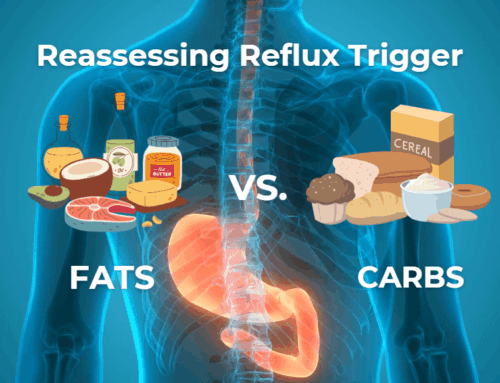
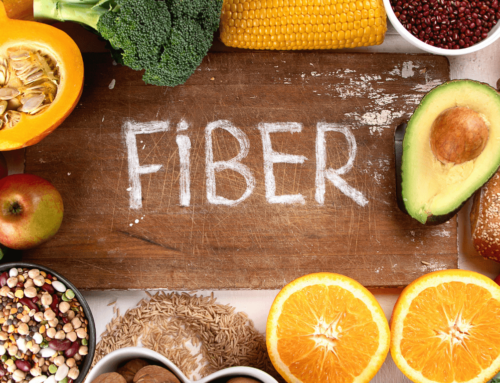
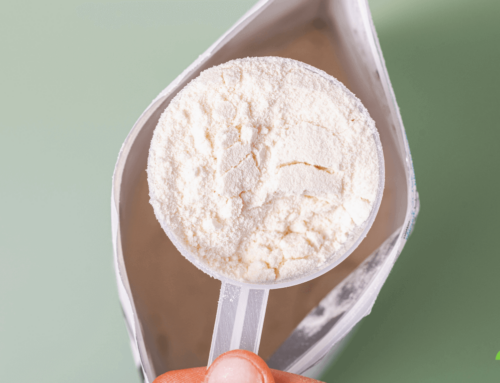
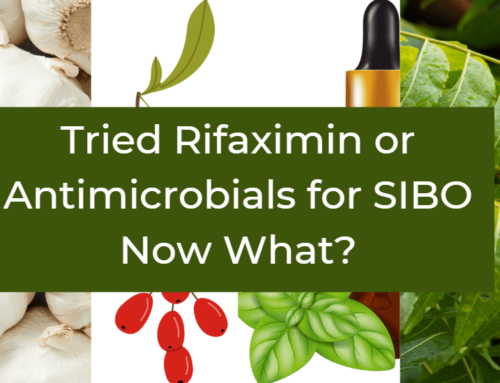
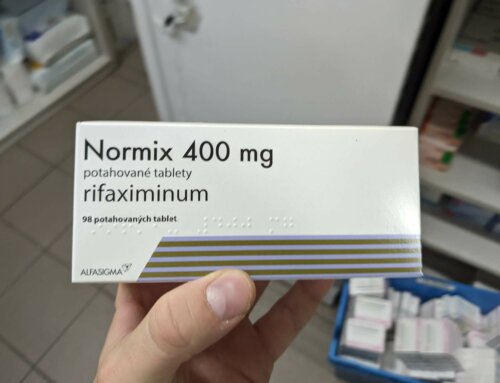
Great topic Norm. I used to use erythritol prior to changing my diet but have since shelved it. I took a further look at erythritol today; the following studies are still giving me pause about using it at this point in my healing…
1) “Chemically, they are hydrogenated sugars, so they have an additional hydroxyl group compared to a sugar. The hydrogenated monosaccharides (erythritol, mannitol, sorbitol, and xylitol) are absorbed more slowly than glucose.” https://www.hablemosclaro.org/Repositorio/biblioteca/b_229_Carbohidratos_de_baja_digestibilidad_en_la_practica.pdf
I wonder if hydrogenated sugars are as detrimental to health as hydrogenated fats have turned out to be?!
2) “Polyols do not have associated active transport systems in the small intestine and are probably absorbed by passive diffusion.
The rate of absorption is related to three factors. First, the diffusion occurs through ‘pores’ in the epithelium and therefore depends upon molecular size.[30] For example, erythritol, a 4-carbon polyol, is well-absorbed in the jejunum but mannitol, a 6-carbon polyol, is not.[31] Secondly, there is variation of pore size along the small intestine with larger pores proximally. Thus, erythritol is less well-absorbed in the ileum.[32] The rapidity of transit through the jejunum will therefore influence the degree of absorption.
Finally, pore size is affected by mucosal disease; pore size reduces in celiac disease where erythritol is poorly absorbed.[32] It is not surprising then that limited studies performed on the absorption of sorbitol and mannitol have yielded considerable individual variation and that the amount available for fermentation varies with dose taken.[33,34]
https://www.btpilates.co.nz/emailnews/fodmaparticles/0ShepherdFodmapReview.pdf
Thanks Lana. I appreciate the info. I will have a look when I get a chance. The thing that impressed me was the much improved absorption of erythritol eliminating or at least drastically reducing the GI side effects.
Did a little more digging…
It seems that all of the polyols are derived from hydrogenation EXCEPT erythritol. It is derived from the fermentation of glucose.
“Whilst most polyols are produced using hydrogenation, there is however one exception, namely erythritol, which is unique in that it is produced by the fermentation of dextrose by the osmophilic yeast Moniliella pollinis or the fungi Aureobasidum sp….”
Glucose Syrups: Technology and Applications by Peter Hull
As I searched further I came across this which is a patent for the industrial manufacture of erythritol using an alternate nitrogen source: https://www.patentstorm.us/patents/5902739/description.html
What I found interesting is that another yeast is commonly used to ferment glycerol to erythritol – and it is a Candida yeast! Don’t know if this would be an issue for us gut people or not…
“Known methods of producing erythritol include a method comprising cultivating a yeast strain belonging to the genus Trigonopsis or Candida in a culture medium containing glycerol as a carbon source and casein hydrolysate as a nitrogen source (Japanese Patent Publication No. 47-41549)”
Maybe it’s important to know how the erythritol was produced??
Very interesting research Lana. I had no idea the production process was so different. I doubt residual yeast would be a problem as they likely have fairly rigid release specifications.
If the yeast isn’t a problem then what we have with erythritol is glucose that’s been fermented. That sounds like a good thing!
I wonder if the study stating “The rapidity of transit through the jejunum will therefore influence the degree of absorption” would hold true for pure glucose as well?
And perhaps this statement: “Finally, pore size is affected by mucosal disease; pore size reduces in celiac disease where erythritol is poorly absorbed” would also be true for pure glucose?
Whatcha think?
I’m sure you will find this of interest… Looks like I’m changing my tune about erythitol :)
“The metabolism of erythritol was assessed in six normal volunteers by measuring the amount of 13CO2 excretion and H2 excretion in breath, and erythritol in urine after intake of 25 g 13C-labelled erythritol. The results were compared with the same variables obtained after intake of 25 g 13C-labelled glucose and 13C-labelled lactitol. In addition, the H2 production by faecal flora supplemented with small amounts of erythritol, glucose and lactitol was measured in vitro, as an index of bacterial metabolism of non-absorbed substrate. In contrast to the results obtained after intake of glucose and lactitol, no increase in breath 13CO2 and H2 was observed after intake of erythritol, and erythritol was nearly completely recovered in urine. The in vitro experiments showed that no H2 was formed by faecal flora from erythritol as compared with glucose and lactitol. It is concluded that erythritol is a substrate that is readily absorbed, and undergoes no metabolism by the host. If part of it escapes absorption, it is not metabolized by faecal flora.”
https://www.ncbi.nlm.nih.gov/pubmed/8457525
Thanks Lana, Good article. I put in a request for the entire article. On the one hand glucose is used to represent 100% absorption in the glycemic index determination. On the other hand, glucose is used in the “less sensitive” hydrogen breath test and does give some positives. I have no doubt that people with celiac, IBS or other SIBO-related conditions absorb glucose and other carbs less efficiently than healthy people. But the low FP still makes sense as a choice over higher FP carbs. Erythritol does seem to be a lower risk sweeter than glucose.
There’s another alternative sweetener that I find very interesting – Lo Han Guo or Luo Han Guo – an extract from Monk Fruit with many reported health claims. Like Stevia this is a plant based sweetener.
I haven’t been able to find much about the digestion effects of this sweetener. The sweet taste of luo han guo comes mainly from the mogrosides, a group of triterpene glycosides. Do you know how us humans do in digesting those?!
Like Stevia, it is very hard to find the pure uncut version of the product but I have found it here (they also have pure Stevia!)
Luo Han Go: https://www.holdthecarbs.com/luo-han-guo-sweetener-concentrate
Stevia: https://www.holdthecarbs.com/stevia-sweetener-reb-A-concentrate?keyword=stevia&category_id=0
*Pure Bulk also has pure Stevia: https://purebulk.com/rebaudioside-a-98-stevia-extract.html#.UxOo5_ldU_U
**Pure Bulk is the company that also carried bulk waxy maize. :)
Excellent. Thanks for the links Lana. The info on Rebaudioside A in the second link was interesting. It seems expensive at $11/25 grams, but since you only need 20 mg per serving (I want to see the measuring spoon!), it comes out to less than a penny per serving.
I’m very interested in starting the fast tract digestion diet to help my chronic acid reflux. However, I do not feel comfortable using artificial sweeteners. I’m still the in process of reading the book but am confused about the potential for using certain natural sugars. For example, can baking be done with glucose or is there any other natural sugar that I could use? I can’t give up sweets 100% but am willing to cut back. I hope you can advise because I would really like some relief! Thank you!!
Hi Dawn,
I understand your concern. Glucose (dextrose) can be used for baking. Use about 30% more than table sugar as its less sweet. Erythritol, the only low FP sugar alcohol, is also a natural sweetener that you can bake with. Malted barley syrup (if not gluten-intolerant) is also a low FP alternative for baking.
Hi Norm,
I received my copy of your book, IBS version. I have SIBO and I’m sifting my way through your recommended diet plan, the Specific Carbohydrate Diet and the low fodmaps diet. My question is about sweeteners. Fodmaps allows maple syrup but not honey, SCD allows honey but not maple syrup. You’re a big fan of Splenda and your blog states that “splenda is not digestible — by people or bacteria” yet SCD says splenda is packed in maltodextrin and is resistant starch which is indigestible by humans but IS digestible by bacteria. Ugh! https://btvc.webfactional.com/knowledge-base/detail/splenda/
It’s frustrating to see conflicting information like this. Either bacteria do or don’t consume Splenda. It shouldn’t be a matter of opinion. Can you clear this up for me?
Conflicting information also makes it difficult to select the best plan to follow. I’ve considered doing a merger of the diets, removing everything that is forbidden and eating only what is allowed on both SCD and fodmaps and then using your tables to construct quantities to stay within your recommended daily FP values.
I do like your approach of limiting the total amount of fermentable foods per meal and per day, although I don’t care for doing math in order to eat, so I’ll likely use the tables and make my own list of preferred foods and their FP values from your tables.
Lastly I want to thank you for the information on amylopectin rice. This is really a lifesaver in my effort to transition to a grain free diet! I get one grain, and it’s one of my favorites, and that makes all the difference!
All the best,
Barbara
Hi Barbara,
I understand. Facts should be facts right? All the information I have read suggests that maltrodextrin is very high GI – like glucose. It make sense also because it’s a breakdown product of starch. How would jasmine rice have a GI of over 100 if maltodextrin (generated whenever starch breaks down) did not digest well. I wonder if the confusion has to do with variations on manufactured maltodextins.
One of my readers emailed me some time ago with this info:
““Maltodextrins can be either low or high GI depending on their branching. Typically, a straight chain maltodextrin will have a higher/high GI, while a branched chain maltodextrin will have a lower/low GI rating. Most companies do not label which type of maltodextrins they are using in their products, therefore it is hard to determine which you are receiving. Some of the branched chain maltodextrins are often used in “diet” meal replacement because of their low GI characteristics…” You can read the rest of the original post at https://forum.bodybuilding.com/showthread.php?t=893223.
“My supposition is that Splenda contains predominantly high GI straight chain maltodextrins, whereas the Walmart drink walloped me because it contains a lot of branched, low GI maltodextrins. (I don’t know if the rest of the Walmart ingredients would cause a problem, so I sent you the whole list.)”
I have not confirmed this info, but I am operating under the assumption that the maltodextrin used to fluff up Splenda is of the high GI variety. Personally, Splenda has never once given me any gas or other symptoms. But if in doubt you can always substitute for dextrose or maltose. Maple syrup and honey both have roughly the same amount of fructose as table sugar.
As to trying a blend of different diets, of course it’s your decision. I prefer to do things in a controlled fashion when ever possible so I know if something works or not. In that regard, it might be best to try one approach at a time.
On my first post I forgot to check the box to receive email notification for followup comments, so I’m just posting again in order to do that.
Hi Norm,
I purchased Fast Tract Digestion Heartburn and find it useful. I appreciate all your work.
I want you to know, however, that using an artificial sweetener like Splenda is a deal-breaker for me. Fortunately, I don’t have much of a sweet tooth since going on a very strict Paleo diet about 18 months ago. Dairy seems to be an issue for me, too, so, I’m not finding the meal plans and recipes 100% useful.
Thanks for your work.
Thanks John. On Splenda, I use it myself, but I recognize that some people have concerns about Splenda. Luckily there are several low FP alternatives including Stevia, Dextrose, and erythritol. Also, I do use low FP diary, but again, I understand if this is not for you. My approach is designed to convey a concept (controlling fermentation potential to control SIBO and symptoms). It’s the approach, not specific foods that is the important thing. I recognize that people have diverse dietary preferences. The book is designed to help, regardless. But you’re right in that some recipes would need to be modified to fit your eating preferences.
I’ve just begun learning about and following the FTD and it has helped reduce my SIBO symptoms. I’m very hopeful after just a couple days. I started it while traveling and have managed to navigate restaurant foods, which have been the hardest for me. My question: I’m unsure about using the sweetener Swerve, which is erythritol and ogliosacharides. Do the ogliosacharides exclude it from the gut-safe category?
Interesting question mkid. I was unable to determine the amount of oligosaccharide (chicory (a.k.a. inulin)) in Swerve. The nutrition facts label just states 5 grams erythritol/oligosaccharides per teaspoon. Potential symptoms would depends on how many of those 5 grams are oligosaccharides. I would assume up to half are oligosaccharides, or 2.5 grams per teaspoon, thus an estimated FP of 2.5 grams per teaspoon. If someone finds the “actual amount” the FP can be adjusted accordingly.
Thanks! That makes sense.
One more question. Do you know the FP of the sweetner trehalos?
Trehalose is the dietary sugar we don’t hear that much about, but is found in fungi, algae, insects and certain plants. I couldn’t find a glycemic index for this sugar, but it’s properties lead me to believe it likely would have a very high GI, similar to maltose. Like maltose, trehalose is a disaccharide composed of glucose units. Since we are born with the enzyme trehalase located on the brush boarder (microvilli) where other disaccharidases are located, there is every reason to believe its digested and absorbed in a similar fashion to maltose (quickly). Since it doesn’t contain fructose as sucrose does, it’s absorption should be quite rapid.
I would assume and FP = 0. Of course, if you develop any symptoms after consuming it, all bets are off.
Hi mKid!
So glad to hear you have made such quick improvements!! It seems that ogliosacharides are short chain carbohydrates that, as you probably know, are poorly absorbed in the small intestine. Can you find erythritol straight to bring when you travel or use a bit of Splenda? I dont use any sweetener in my coffee, for example, just a splash of heavy cream. My husband used to use sugar in his coffee. He made the switch a few years ago to heavy cream only, and his taste buds adjusted. He also lost weight!
I don’t use Swerve, except in baking. My husband uses it in his coffee, though. I worry about him getting SIBO, since he’s on a PPI and diabetic. He’s an old dog who doesn’t like learning new tricks.
Hi Norm!
Did you come across this study when doing your research on Splenda? It is an animal study stating that Splenda may reduce beneficial gut bacteria and increase fecal pH. The study abstract specifically mentions a loss of some beneficial bacteria that seem really important to hold onto. I recognize this may not be an issue if not consumed daily or in large amounts. I wonder if you had seen this study? THANKS! (Still planning on trying Splenda now and then….)
https://www.ncbi.nlm.nih.gov/pubmed/18800291
Hi Bearsmom,
You may have forgotten that you asked this same question on the SIBO Diet blog post. Here is the answer I posted:
Thanks for posting this question. I understand and respect that some people are concerned with the safety of Splenda, the fact that it’s not “natural” and / or the possibility that it could upset the microbiota. For this reason, I provide several alternatives to Splenda including stevia, glucose, erythritol (the one gut friendly sugar alcohol), maltose, rice or barley malt syrup or even small amounts of sucrose containing sweeteners. I personally think sucrose and sweeteners containing sucrose are by far the worst sweeteners in terms of gut health and general health.
With regards to the paper you cite, I’m a bit skeptical. First off, this study was funded by the sugar industry – who doesn’t like Splenda much. Also, there is a question about what the changes in micro numbers really mean (when you have 20 million bacteria, a drop to 50 to 80 percent of the control is still 10 million to 16 million bacteria – does it matter?). Also the weight-loss data follows no dose response, typically a giveaway for results that are not meaningful (weight gain was higher at a lower level, then decreased at a higher level, then increased again at an even higher level of Splenda). Lastly, the study was done with rats raising the question of relevance to people.
Personally, use small amounts of both Splenda and stevia, but this is a personal choice. I understand and respect your concern and decision to use an alternative.
Hi Norm!
Thanks! And sorry yes, for the double post. I was mostly interested in your thoughts on the animal study and appreciate them greatly. I am open to all of the sweeteners you recommend. Dr. Mary Eades, on her blog has some nice recipes for a simple syrup made from Splenda, for use in a gut-friendly, low carb cocktail. I am going to give this simple syrup a try! https://www.proteinpower.com/drmd_blog/recipes/low-carb-mint-julep-for-derby-day/
Hey Norm,
I was looking at the microbiol degradation of aspartame, these two studies would indicate that bacteria can utilize it.
https://link.springer.com/chapter/10.1007%2F978-1-4757-9453-3_50
https://www.researchgate.net/publication/229810314_Degradation_of_Aspartame_in_Yogurt_Related_to_Microbial_Growth
I not sure why the full text for the first link isn’t popping up this morning as it was lastnight but it did indicate around a 100% growth in common bacteria like e.coli etc.
I’m sitting here wondering whether the degradation is to slow to be of an issue in a gut actively breaking it down to its simpler compounds for ingestion or it could possibly feed opportunistic bacteria.
Whats your take on this ?
This link explains the yogurt fermentation of the sweetener more,
https://books.google.com/books?id=oLDMBQAAQBAJ&pg=PA232&lpg=PA232&dq=aspartame+microbial+degradation&source=bl&ots=wzstSpT9k_&sig=GuZpUXV_uthj-W9BA47OPknmokc&hl=en&sa=X&ei=ddHUVJ3UJYSS7AbGuoHICw&ved=0CEwQ6AEwBw#v=onepage&q=aspartame%20microbial%20degradation&f=false
still not sure what to make of it, incubating at 32 degrees for 13 hours caused a reduction of 10%, our body is around 36 degrees, but food doesn’t stay in our small intestine for 13 hours, plus enzymes are activity breaking the sweetener down.
It be nice to know a definite answer as to whether its a safe sweetener! :)
If you go to this link,
https://www.google.com/webhp?sourceid=chrome-instant&rlz=1C1KMZB_enJE543JE543&ion=1&espv=2&ie=UTF-8#q=aspartame+degradation+microbial&start=0
and click the second link, it will show a pop up of the study with all the details. Not sure why a direct link doesn’t work.
If i lay the results out for you, they grew the cultures in darkness at 20 degrees, aspartame caused an increase at day 3 in Erysipylothrix, rushippathie, K.pneumoniae and ecoli. Day 5 there was an increase in bacilus cereus, stretocoocus and ecoli and further increases were seen in day 7. Similar things were seen with saccharin, but instead the increase was day 5 and a significant increase of satpyloccus epidermis and micrococcus in day 7.
To me this wouldn’t be a problem for fermentation in the gut because even with aspartame with the quickest increase happening at day 3, is just to long a period for bacteria in our small intestines to make use of. Maybe in a really constipated colon though this may be a different story.
I’m leaning toward we are safe here. Love to hear your responce
Hi Cameron, Thanks for the link. I see what you mean, but I also was able to see the pop up of the paper, though most of it was blurred out.
From a quick preview, it doesn’t look like a great paper. They measured a 10% loss of aspartame during 6 weeks of refrigerated storage. I would have to get the whole paper for the details, but would be interested in how much stability work they did to determine that the aspartame was stable if the microbes were omitted. Also, the changes in individual strain counts might be normal changes over time and independent of the aspartame. Again, would need to read the paper in it’s entirety to tell for sure.
My own preference is to avoid aspartame. I don’t use it as a sweetener, though I know it pops up in a variety of foods so is hard to avoid completely.
I just finished reading your Fast Tract IBS book. I have had SIBO for about 5 months now and am starting to follow your plan and an herbal antibiotic plan to get rid of it. I was so surprised to find that you recommend sucralose so highly. I feel like it was one of the contributors in my gut issues, even though I know we are all different and everyone reacts to things differently. I have an almost immediate gut reaction to sucralose (endless gas noises, diarrhea if I consume it for several days in a row) and have for about 2 years so I just assumed everyone does. I guess not!